
It’s that time of year when we are reminded by Mother Nature that emergency situations can happen quickly with limited warning. Although Arizona has few, if any, tornados and hurricanes, residents still see extreme heat, dust storms, sudden rainstorms, forest fires and flooding. Depending on where you live, you may be subject to one or more of these. But what do you do if you fall or if your air conditioning goes out?
I’m a planner — always have been. I’m the guy asking, “What if?”
It’s not a bad question to ask because it allows us to be prepared if something unexpected happens. It gives us confidence to act quickly when needed.
Fortunately, the federal government has supplied many tools through FEMA to make our emergency planning easier. Ready.gov provides tools to help plan for flooding, thunderstorms and lightning, power outages, extreme heat, attacks in public places and drought.
Older adults may face some special challenges during an emergency. Mobility problems or chronic health conditions can be limiting factors. We may not have family nearby. Caregivers, in-home health care or meal-delivery services may not be able to reach us. Hearing or vision problems or cognitive impairment may make it difficult to access, understand or respond to emergency instructions. Creating a plan, naming a contact person who can check in on you or creating a neighborhood check-in system can all help you be prepared. How would you evacuate your residence if you needed to?
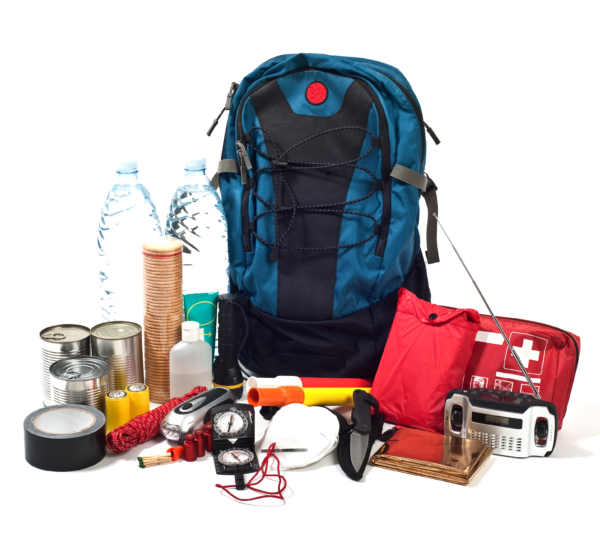
Make sure that you have an emergency contact list with all the important numbers needed in case of an emergency, such as police, fire, poison control, doctors, etc. Quick access to needed resources can provide extra life-saving time when suddenly needed.
Do you rely on specific medical life support equipment or refrigeration for medicines that depend on electricity? Can you survive without air conditioning? Have you filed a Life Support form with your electric provider? Local residents can contact ED3 at ed3online.org. ED3 strongly recommends having an uninterruptible power source (e.g. portable generators, battery backups) which could run medical equipment during the loss of power. If you do not have backup resources, consider a temporary shelter or medical facility. The Medical Status Form requires your physician’s input and signature.
Help first responders help you by installing key lock boxes outside your front door that can only be opened by the fire department to save time in entering your home during emergencies. Provide first responders with vials of life (sometimes folders of life) stored near your refrigerator, including information about health issues, medications or any other special medical concerns. Another option is to enroll in the police department’s Special Needs Registry.
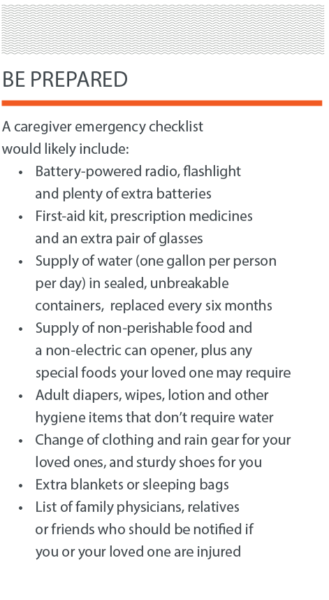
After an emergency, you may not have access to clean water or electricity. Or you may have to quickly evacuate your home. To protect yourself and your family, build an emergency supply kit. Use the FEMA list at Ready.gov as a reference and remember you may need kits for home, work and your car. Most people like to prepare a “grab and go” bag that makes them readily mobile if necessary. “Preppers” know there are several large companies providing emergency food or living supplies. Common camping gear is usually a good source of basic supplies and equipment.
If you rely on a caregiver, you might want to complete a Care Plan Form for those who might be your temporary caregivers in an emergency. An excellent form is available from the CDC at CDC.gov. Include this form from your vial/file of life. You should also reference the location of your medications so that emergency responders can access them.
Ron Smith is a living-in-place advocate, a member of the Age-Friendly Maricopa Advisory Committee, a Certified Aging-in-Place Specialist and a Certified Living in Place Professional.
This content was first published in the September edition of InMaricopa magazine.



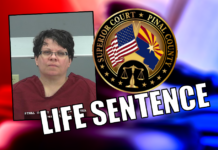
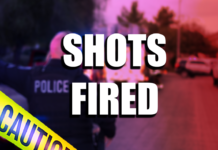

![Alleged car thief released without charges Phoenix police stop a stolen vehicle on April 20, 2024. [Facebook]](https://www.inmaricopa.com/wp-content/uploads/2024/04/IMG_5040-218x150.jpg)

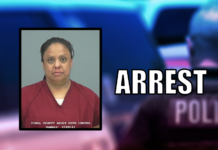



![3 things to know about the new city budget Vice Mayor Amber Liermann and Councilmember Eric Goettl review parts of the city's 2024 operational budget with Mayor Nancy Smith on April 24, 2024. [Monica D. Spencer]](https://www.inmaricopa.com/wp-content/uploads/2024/04/spencer-042424-preliminary-budget-meeting-web-100x70.jpg)


